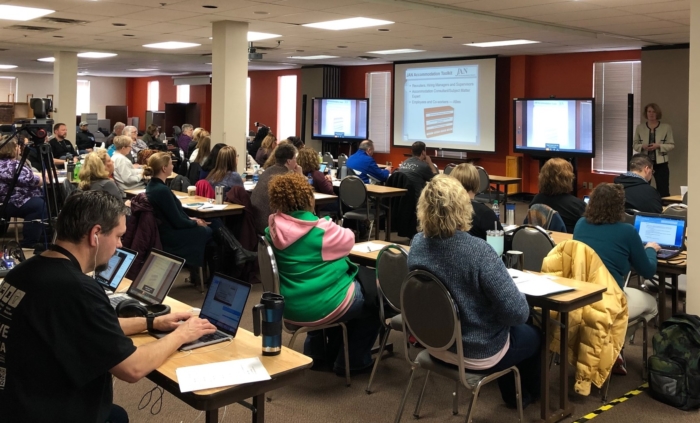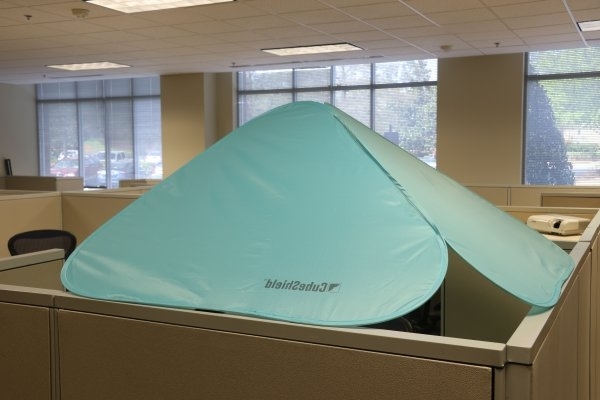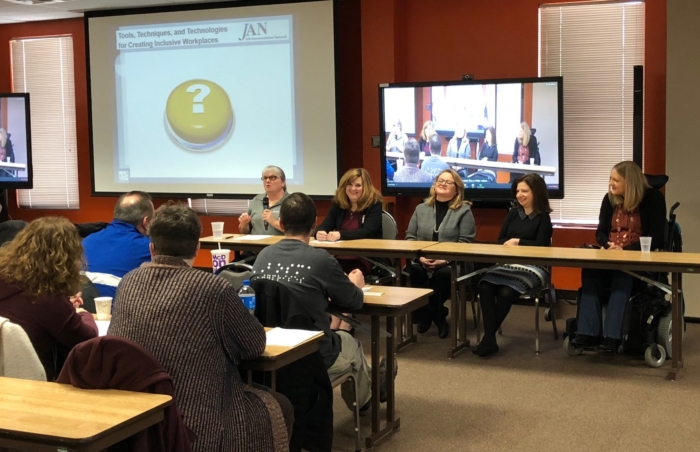Earlier this month, INDATA held a free, full-day training session described as a “Job Accommodation Boot Camp.” This event gave an opportunity for employers and people with disabilities to think about the inclusiveness and accessibility of their workplace. They also learned how to seek accommodations to improve it.

“Some people with disabilities may be hesitant to ask for accommodations,” said Brian Norton, the director of assistive technology at Easterseals Crossroads. “This training session is one of many tools for opening people’s eyes to the wide world of possibilities out there for people with disabilities. The workforce is more flexible and accommodating than ever before.”
The recent training session mainly discussed needs in the workplace, testimonials from people with disabilities and information on accommodations from the Job Accommodation Network.
Those in Need of Accommodations
One in five Americans identifies as a person with a disability. And as our world becomes more inclusive and accessible, more people with disabilities are entering the workforce.

In 2010, 19 percent of people with disabilities reportedly graduated from college — up from 14 percent in 2004. As graduation rates rise, so do expectations of the workforce. Further empowered by the Americans with Disabilities Act, younger generations demand not to be hindered by outdated barriers.
Older workers expect accommodations as well. Ten thousand Baby Boomers reach the age of 65 every day, and many of them are deciding not to retire. Therefore, now more than ever, the workforce will be impacted by the chronic health conditions of aging workers. According to Georgetown University’s Center on an Aging Society, half of the U.S. population will have at least one chronic condition and one-quarter will be living with multiple chronic conditions by next year.
In addition, veterans with physical wounds and mental disabilities need to be considered as more of them are entering the private and public sector.
What JAN Can Do
Established in 1983 as a free national consulting service, the Job Accommodation Network (JAN) is contract-funded by the U.S. Department of Labor’s Office of Disability Employment Policy.
JAN works closely with businesses to provide solutions to any barriers employees with disabilities may face.

Here’s an example of a problem JAN could solve: A federal employee with lupus, which causes sensitivity to light, asks his or her employer to remove all overhead bulbs in their work space. Since this could cause a conflict with co-workers in the cubicle area, JAN recommends the CubeShield, a tent-like structure that blocks out bothersome overhead lights.
“Both employers and employees are sometimes surprised by how simple some accommodations can be,” said Anne Hirsh, JAN’s co-director. “The CubeShield is a good example of an easy, cost-effective solution to a common problem in the workplace. At JAN, we do a follow-up study for every accommodation. Employers have consistently told us the cost of the accommodation they implement is more often than not $0. More than half of employers tell us the time accommodations cost nothing. When there is a cost, it is typically $500. They also report accommodations are effective 75 percent of the time and lead to a number of direct and indirect benefits.”
Direct Benefits of Accommodation for Employers
- 89 percent retained a valued employee
- 72 percent increased employee’s productivity
- 56 percent increased employee’s attendance
Indirect Benefits of Accommodation
- 63 percent improved interactions with co-workers
- 62 percent increased overall company morale
- 56 percent increased overall company productivity
JAN is just a quick phone call away. This organization wants people with disabilities to know how important it is to speak up and how easy it is to help their workplace adapt to their needs.

“What we hope to do for people with disabilities who contact us is to help them become better self-advocates when requesting a reasonable accommodation,” Hirsh said. “Understanding possible rights and how best to request accommodations is just as important as knowing what accommodation options there may be for a specific situation. For employers, our hope is to help them understand the bottom line with implementing accommodations is to help all employees be the most productive employees they can be. When either group gets it and you can sense that ‘aha moment,’ it is very rewarding.”
Click here for more information on JAN as well as the costs and many benefits of job accommodations.
